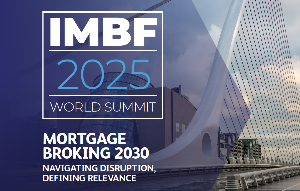
Missed mortgage repayments still remain below the pre-Covid levels of 1.35% of December 2019 to stand at 1.27% of the active population in April, down from 1.31% in March, with 19,000 mortgages reported past due.
However, mortgage arrears have risen 25% when compared to the same time last year.
Although mortgage borrowers’ budgets remained stretched, Centrix managing director Keith McLaughlin says there is some evidence pointing towards Kiwi households potentially starting to acclimatise to the new norm.
March data from the RBNZ shows non-performing housing loans were $1.085 billion, or 0.3% of banks’ non-performing loans. That is bank loans subject to late payment or unlikely to be repaid by the mortgage holder.
Defaults in the still hard hit construction sector were up 18% year-on-year in April as firms contend with inflation and some supply chain issues.
No good fixing long term at the peak
Meanwhile, jumping on long-term interest rates because they’re the lowest on offer can come with significant costs later.
Infometrics chief forecaster Gareth Kiernan says the lift in wholesale interest rates following the Government’s expansionary Budget last month was reversed last week by the RBNZ signalling that it is at the end of its monetary tightening and the OCR is on hold.
Financial markets are now firmly thinking about when the Reserve Bank could start to cut the OCR. Although the RBNZ’s own forecasts suggest a cut might not occur until the second half of next year, Kiernan says longer-term wholesale rates are likely to gradually factor more cuts into their pricing – particularly if headline inflation continues to track downwards as forecast.
While this is good news, he says, perhaps the most important lesson to remember is the one learnt by borrowers in 1998 and 2008 – jumping on long-term rates because they’re the lowest currently on offer can come with significant costs later.
In April 1998, five-year fixed rates were at 9.4%, compared with one-year rates of 10% – but by April 1999, one-year rates had plunged to 6.1%, so being locked into that 9.4% for another four years was eye-watering.
Similarly in April 2008, five-year rates were 9.5% and one-year rates were 10.7%, but the latter had dropped to 5.8% a year later.
“With five-year rates currently sitting at around 6.4%, the potential for regret now is nowhere near as large,” says Kiernan.
“If this is the peak in mortgage rates, it might be the last point in time to be fixing a mortgage for too long.”





Comments
No comments yet.
Sign In to add your comment